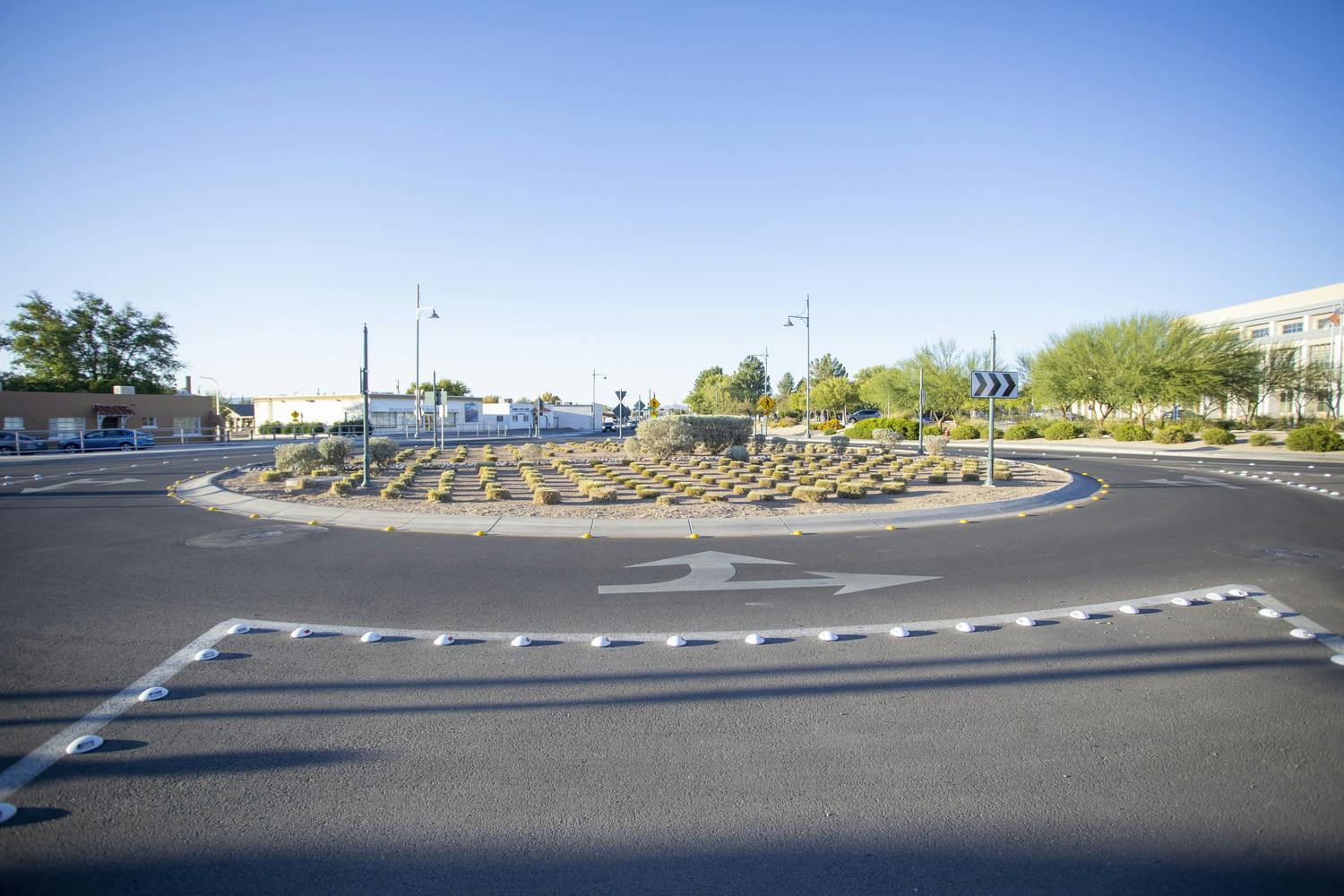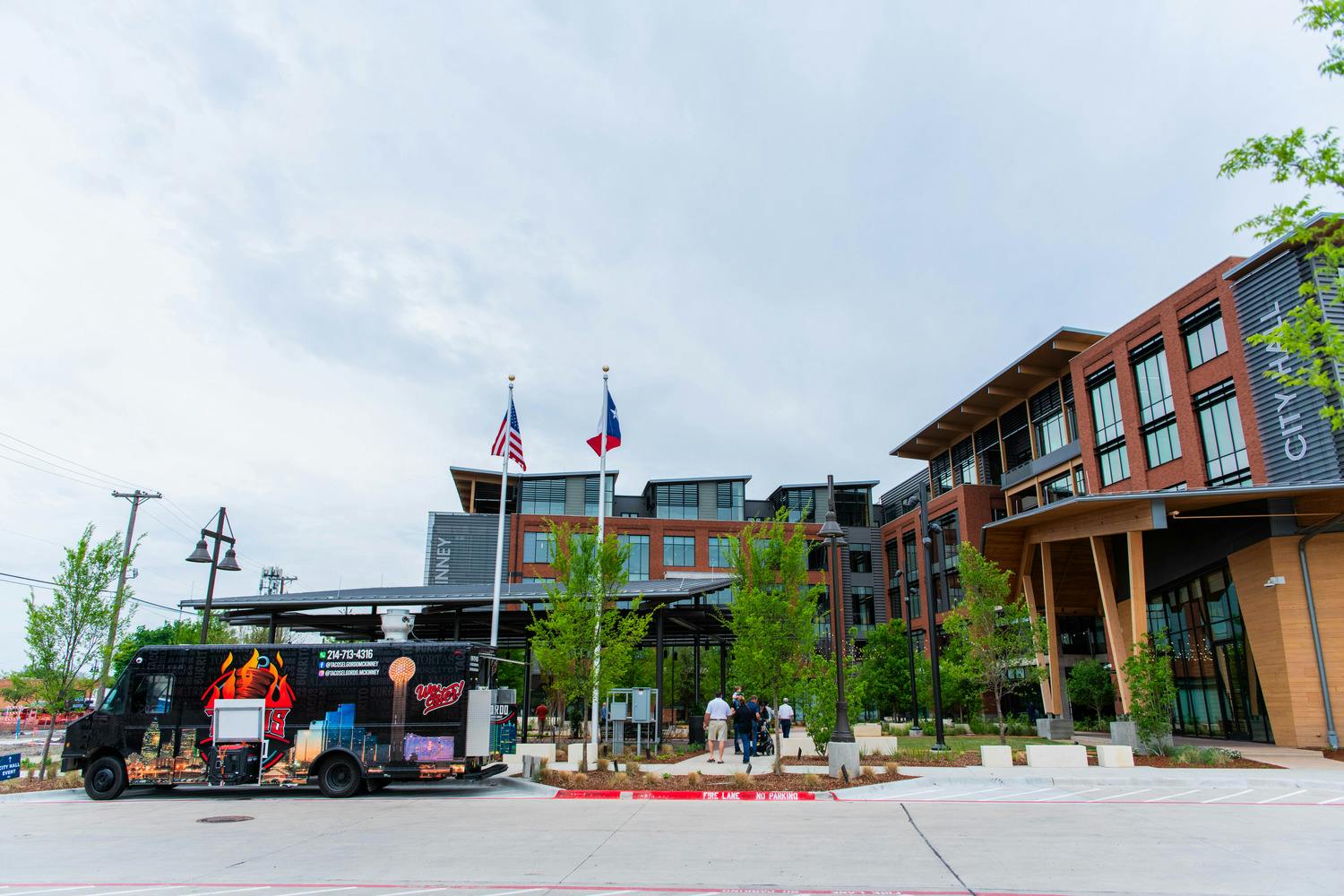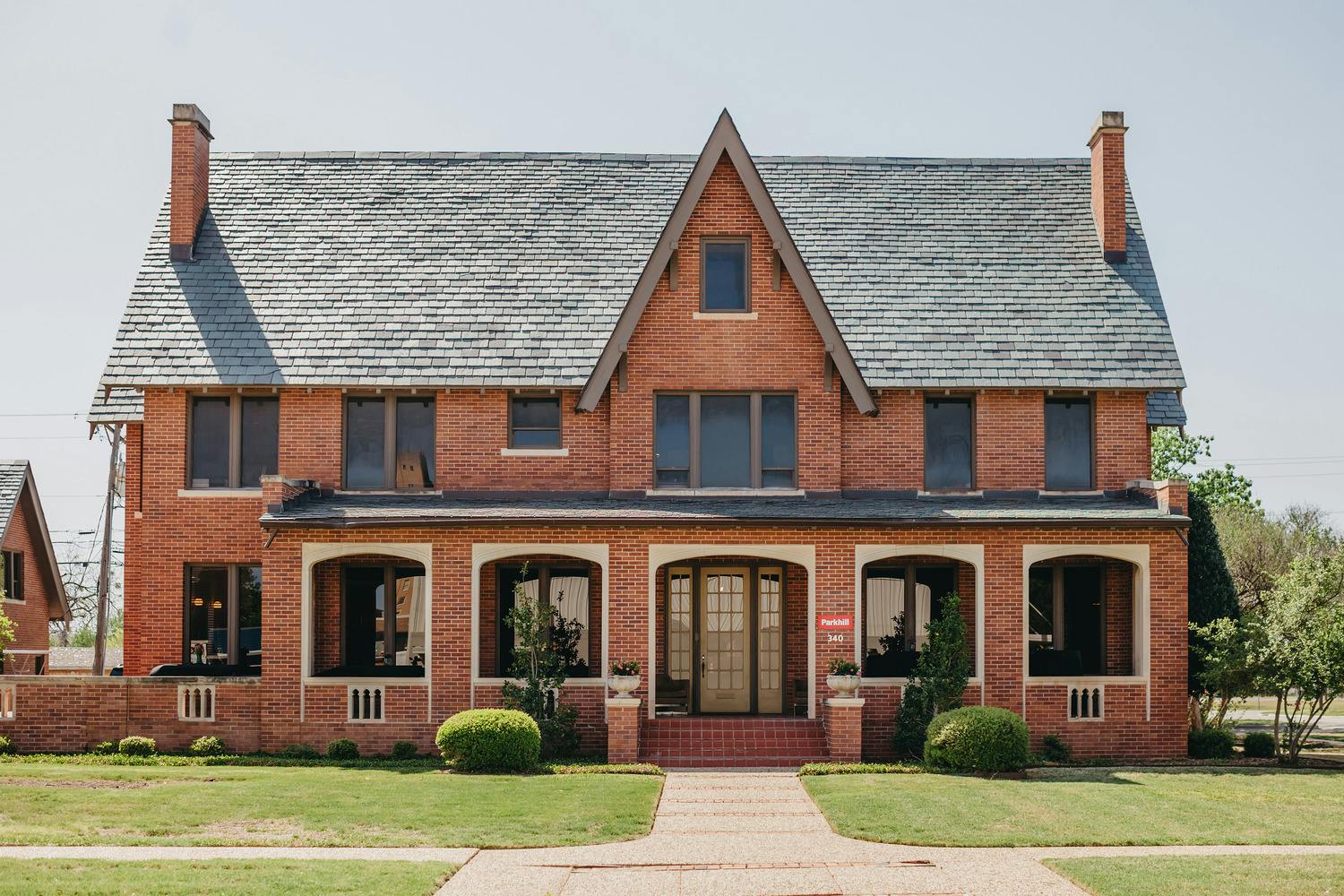Thinking Beyond the Vehicle – NACTO’s Urban Street Design Guide Principles
Category: Engineering
Written By: Valerie Edgren
Date: July 8, 2020

As transportation engineers, we understand the importance of safety and acknowledge there is no "one size fits all" approach to roadway design. Along with local and state design guides and manuals, roadway designers have been using publications such as the American Association of State Highway and Transportation Officials' Green Book and the Roadside Design Guide, the Transportation Research Boards' Highway Capacity Manual, Manual on Uniform Traffic Control Devices, and many other guides for the design and planning of our transportation network.
However, in the not-so-distant past, some design professionals and city leaders advocated that these guides are not all-encompassing for the development of urban streets. In 1996, a coalition of city transportation departments was formed to meet the complex needs of cities and gave birth to the National Association of City Transportation Officials (NACTO). In 2013, NACTO released the Urban Street Design Guide. Since then, many cities, including El Paso, have adopted them as their official street design guides. In 2016, the Fixing America's Surface Transportation Act or "FAST Act" was amended to include the Urban Street Design Guide as a resource in developing design criteria for the National Highway System.
The City of Las Cruces, N.M., chose the Urban Street Design Guide for the revitalization of its downtown. For Las Cruces, the guidelines are just a part of an effort to revive the downtown area. In 2002, the New Mexico Heritage Preservation Alliance determined that the Las Cruces Downtown Mall was one of the most endangered places in all of New Mexico. Downtown was seen as a place to "drive-through" rather than a destination to "drive to."
Parkhill partnered with the city to redesign Downtown Las Cruces streets and transform them into pedestrian-friendly streets that would improve safety, promote economic vitality, and provide a sense of place for the community. Five of the six key principles of the NACTO guide are as follows:
- Streets Are Public Spaces
- Great Streets Are Great for Businesses
- Streets Can Be Changed
- Design for Safety
- Streets Are Ecosystems
Streets Are Public Spaces
The design approach for Las Cruces focused on the pedestrian instead of the largest anticipated vehicle to provide a safe and comfortable public space. Depending on the available right of way, proposed sidewalks varied in width from 5.5' to 12'.
Great Streets Are Great for Businesses: Recommendations after years of master planning and public coordination included increasing the amount of parking in the area. The plan proposed a mixture of parallel and back-in angle parking. Back-in angle parking implementation was challenging due to the perceived notion that this type of parking would be difficult to maneuver. However, via stakeholder engagement that included the public, business owners, and elected officials, city staff sold the idea by stressing its benefits, which included traffic calming and pedestrian safety. In all, 216 parking spaces were provided, resulting in 56 additional spaces. Parking was a crucial element in the revitalization effort since economic studies for the area suggested that each extra parking space would translate to additional downtown revenue in the form of consumer spending.
Streets Can Be Changed
The "Racetrack," the city's downtown one-way street system consisting of Water Street and Church Street, was known for its speeding vehicles along the 25 mph street. The major element of the Las Cruces project was the conversion of these two major streets from one-way to two-way facilities. One concern was the safe conversion of the one-way street system into a two-way system. The city was able to successfully change the traffic patterns via carefully phased construction sequencing and an aggressive public information campaign with no reported issues.
Design for Safety
According to NACTO, intersections are where the most severe encounters between cars and people exist. The goal is to create a safe and intuitive design. Compact designs slow traffic and increase visibility for all who are in the intersection. Designers are encouraged to break large, complex intersections into a series of smaller ones. Compact intersection designs to reduce pedestrian exposure to vehicles via curb extensions and reduced curb radii were implemented into Downtown Las Cruces at the various intersections within the project. Compact intersections can cause problems for larger vehicles due to right-turn movements. The design team decided to adopt NACTO's DL-23 design vehicle (delivery truck) as the basis for the intersection design instead of AASHTO's larger SU-30 or even the WB-50 (fire) truck. The DL-23 has an inside turning radius of 22.5' and an outside turning radius of 29'. The plan allowed the team flexibility in designing tighter curb returns. Larger infrequent vehicles such as fire trucks, modeled with a WB-50, would be accommodated by allowing them to use the entire intersection for turning movements.
As previously mentioned, back-in angle parking was an important part of the project. Studies have shown that back-in angle parking is one of the safest forms of parking, rather than head-in or parallel parking. With this type of parking, the driver has a better line of sight and can see oncoming traffic when pulling into traffic. For example, a person putting groceries in the trunk is not in the line of traffic.
A focus of the NACTO guide is making the streets safer by narrowing lane widths. As lane widths are reduced, vehicles tend to slow down and thus provide a safer environment. The Las Cruces project design specified 10' and 11' lanes along the corridor.
Streets are Ecosystems
Per the NACTO guide, "Streets should be designed as ecosystems where man-made systems interface with natural systems." This idea includes permeable pavement, passive rainwater harvesting for landscaping and street trees.
Crews planted native drought-resistant street trees in the area. Based on a study conducted by the Center for Urban Forest Research, not only do street trees provide shade and enhance the aesthetics of an area, 20% shade on an asphalt street improves pavement conditions by 11%. Shade translates to more time between resurfacings, thus easing the burden on street maintenance budgets.


